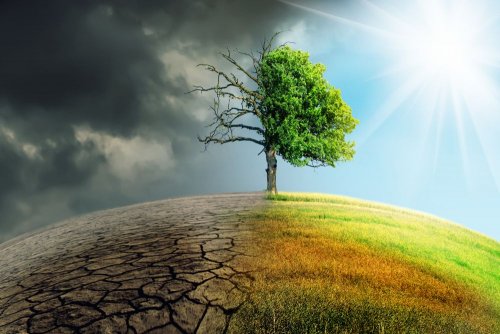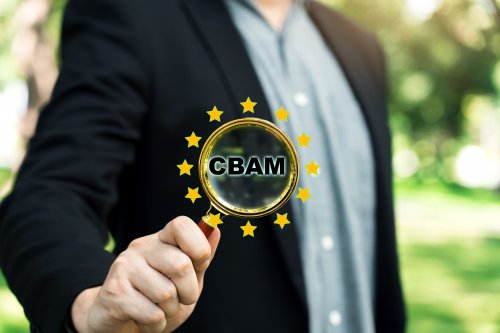We have collected the most up-to-date information on the implementation of the CBAM mechanism in Ukraine and Europe. In the simplest possible way, EcoPolitic will tell you what the carbon border adjustment mechanism (CBAM) is, what is the purpose of its implementation, and when it will start working in Ukraine.
What is CBAM and what is the purpose of its introduction
CBAM is a mechanism proposed by the European Union. It provides for the introduction of a tax on the carbon content of goods imported into the EU. This abbreviation stands for "Carbon Border Adjustment Mechanism" or "mechanism for carbon adjustment of imports". This is the world's first cross-border tariff on carbon emissions.
The initiative for its implementation is included in the package of EU laws on climate change "Fit for 55" and is an important tool of the European Union for the transition to a green industrial policy and achieving zero emissions by 2050.
Purpose of CBAM – prevent so-called "carbon leakage", when companies move their production to countries with less stringent environmental regulations to avoid the costs associated with greenhouse gas emissions.
How CBAM will work
Importers of the most carbon-intensive EU goods will have to pay a duty for carbon emissions associated with the production of goods outside the EU. They will buy certificates, where one certificate will correspond to one ton of CO2 equivalent (carbon or other greenhouse gas). The cost of the certificate will correspond to the cost of carbon emissions that would have been paid if the goods had been produced in the EU. However, if the company has already paid a similar price in its country, it will avoid the duty.
Thus, European producers who adhere to strict environmental standards will have a level playing field with foreign producers.
Until 2026, when the payment of the carbon tax begins, importers are required to obtain so-called CBAM certificates for their products.
Who is covered by the Carbon Import Adjustment Mechanism (CBAM)
At the initial stage, CBAM will cover 6 key sectors with high carbon emissions (carbon-intensive goods):
- steel and cast iron;
- aluminum;
- cement;
- fertilizers;
- electricity;
- hydrogen.
When will CBAM come into effect
To make it easier for you to navigate, we have compiled a timeline indicating the main dates for the implementation of the Carbon Import Adjustment Mechanism (CBAM):
December 2019 – The European Commission presented CBAM as part of the European Green Deal.
July 14, 2021 – The European Commission publishes a package of 12 "Fit for 55" initiatives, which includes an initiative on CBAM.
May 17, 2023 – the new Regulation of the European Union, which establishes the mechanism of carbon adjustment of imports, entered into force.
October 1, 2023 – the beginning of the transition period.
During it, importers of goods in the 6 carbon intensive sectors listed above undertake to collect data on direct and indirect greenhouse gas emissions related to their imports and report them to the EU authorities without paying any financial adjustments.
December 31, 2024 – the last day when companies can choose the form of reporting themselves.
January 1, 2025 – from this day, submission of CBAM reporting is allowed only according to the EU method.
January 1, 2026 – the starting point of the final stage of CBAM implementation. From this date, importers will be obliged to declare every year the quantity of goods imported into the EU in the previous year, as well as their embedded carbon emissions. They will have to pay an "adjustment" levy to cover the gap in carbon prices between EU and non-EU products.
How CBAM in Ukraine will affect domestic manufacturers
More than 2.7 thousand Ukrainian companies are subject to SVAM when exporting products.
The current regulation of the mechanism of carbon adjustment of imports allows the EU to take into account force majeure circumstances – a full-scale invasion – and then Ukraine may not be subject to the requirement to submit verified reports from 2026. Instead, domestic entrepreneurs will submit only declarative reports for CBAM, without paying for certificates. But it will be possible to take advantage of this opportunity only if an agreement is reached on the application of the CSAM to Ukraine based on the declarative principle between Ukraine and the European Union.
In the event that the strict requirements of CBAM come into force, Ukraine's losses, if calculated at 2023 prices, may amount to $600 million from the export of pig iron, $640 million from semi-finished products, and $200 million from rolling stock. In general, losses for industrial enterprises may reach a total of $1.5 billion. other branches of industry also suffered losses.
Ukrainian exporters named the main problems with the implementation of CBAM in Ukraine:
1. Lack of accreditation for Ukrainian emissions verifiers by the European Commission
This process has not yet been launched.
2. Lack of a proven reporting procedure
Difficulty collecting the necessary data and a complex and controversial methodology for calculating built-in emissions have become an obstacle for companies.
3. Lack of relevant documentation on CBAM in Ukraine
4. Unpreparedness of Ukrainian companies by 2026.
Due to the full-scale invasion and the lack of financial assistance from the state and the European Union, the manufacturing companies will not have time to modernize or replace the production equipment with new ones that meet the European requirements for carbon emissions.
5. Lack of interest of the authorities
Experts and business representatives are convinced that the Ukrainian government is not doing enough to help Ukrainian companies prepare for CBAM.
The introduction of CBAM is aimed at reducing carbon emissions and preventing global warming. Ukrainian manufacturers face numerous challenges in implementing CBAM in Ukraine: insufficient training, lack of proper documentation, and difficulties with the accreditation of verifiers. However, under conditions of force majeure, Ukraine can avoid paying the carbon tax. It is important that the government and business intensify efforts to adapt to new environmental standards in order to minimize potential economic losses and ensure the competitiveness of Ukrainian products on the European market.





